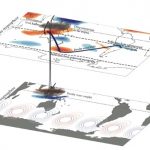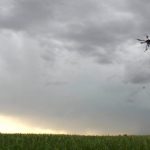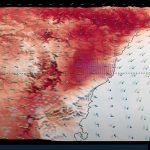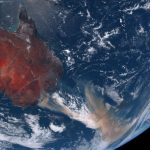 September 24, 2021 4:40 pm
Published by Climate Extremes
September 24, 2021 4:40 pm
Published by Climate Extremes
During the 2020 La Nina, many areas of Australia received near average to severely below-average rainfall, particularly during November. CLEX researchers found that several compounding factors contributed to the drier-than anticipated spring conditions.
 September 22, 2021 11:19 am
Published by Climate Extremes
September 22, 2021 11:19 am
Published by Climate Extremes
Variability in urban land-use results in microclimatic variability across a city that is not picked up by government weather station networks. Crowdsourced weather stations can fill these gaps.
 September 3, 2021 8:51 am
Published by Climate Extremes
September 3, 2021 8:51 am
Published by Climate Extremes
It has long been suggested in the literature, and discussed casually by meteorologists, that rainfall in Melbourne often occurs as lines of precipitation. However, this had yet to be quantified. CLEX researchers analysed 15 years of radar data from the Australian Radar Archive, using an objective method to identify and track these ‘linear systems’ based on radar reflectivity, size, and shape characteristics.
 August 27, 2021 11:25 am
Published by Climate Extremes
August 27, 2021 11:25 am
Published by Climate Extremes
CLEX researchers have overturned a scientific paradigm that has existed for 50 years. New research published in Nature Geoscience shows the massive convection caused by the ocean just north of Australia, causes a chain reaction that is strong enough to put an almost permanent dent in the powerful winds that circle the Antarctic.
 July 16, 2021 10:12 am
Published by Climate Extremes
July 16, 2021 10:12 am
Published by Climate Extremes
The overarching goal of the Colorado State University Convective CLoud Outflows and UpDrafts Experiment (C3LOUD-Ex) was to enhance our understanding of deep convective storm processes and how they are represented in numerical models. Pivotal to the experiment was a novel “Flying Curtain” strategy.
 July 14, 2021 1:46 pm
Published by Climate Extremes
July 14, 2021 1:46 pm
Published by Climate Extremes
This research uses Sydney, Australia’s largest city, as a test case for our new configuration of the Weather and Research Forecasting model run at a very high resolution of 800 m with a new urban classification scheme that describes the complexity of Sydney’s built environment.
 July 14, 2021 1:23 pm
Published by Climate Extremes
July 14, 2021 1:23 pm
Published by Climate Extremes
In this study, CLEX researchers and colleagues showed that the North Atlantic sea-surface temperature response to ENSO is nonlinear with respect to the strength of the sea-surface temperature forcing in the tropical Pacific.
 July 13, 2021 2:59 pm
Published by Climate Extremes
July 13, 2021 2:59 pm
Published by Climate Extremes
CLEX researchers used data from a wind profiler radar pair at Darwin, Australia, to determine the characteristics of individual up- and downdrafts observed at the site. They found updrafts with 5km vertical heights with extreme rain rates.
 June 15, 2021 11:58 am
Published by Climate Extremes
June 15, 2021 11:58 am
Published by Climate Extremes
Research by Annette Hirsch into heatwaves over Sydney has been turned into a spectacular animation by Drew Whitehouse from NCI Vizlab.
 May 27, 2021 12:11 pm
Published by Climate Extremes
May 27, 2021 12:11 pm
Published by Climate Extremes
An unusual southern stratospheric warming event amplified the conditions that led to the Black Summer bushfires of 2019/20. CLEX researchers explored how frequently these rare warming events may occur with climate change.









